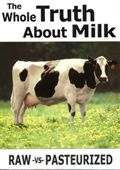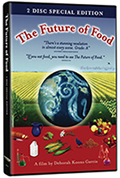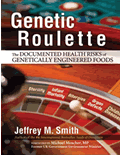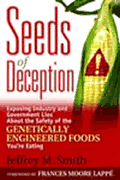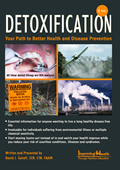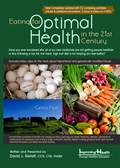BUSH'S ENVIRONMENTAL LEGACY ON GMOs IS IRREVERSIBLE
By
Jeffrey Smith
December 10, 2008
NewsWithViews.com
In a few hundred thousand years, after all weather effects of 21st century climate change have disappeared from the earth’s surface, after our quietly smoldering nuclear waste has been extinguished, two destructive impacts traceable to George Bush’s policies will yet remain.
The first is extinctions. Species that have died out, including the subset resulting from Bush’s environmental policies, will forever deprive our evolving biosphere of their contribution.
The second is genetically modified organisms (GMOs)—animals, plants, bacteria, and viruses, who’s DNA have been mixed and mangled by insertions from foreign species. Once released into the ecosystem, by intention or accident, the genetic pollution self-propagates. No recall by the Obama administration can clean up Mexico’s indigenous corn varieties, now contaminated by our genetically modified (GM) corn. No executive order can remove or even identify the wild mustard plants now carrying altered genes bestowed on it by the pollen from its cousin, GM canola.
We all know stories that illustrate the exponential effects of invasive species. Here’s my favorite, recalled in my book Genetic Roulette:
On Christmas Day 1859, the Victorian Acclimatization Society released 24 rabbits into the Australian countryside so that settlers could hunt them for sport and feel more “at home.” The rabbits multiplied to well over 200 million, spreading out over 4 million square kilometers. That Christmas present now costs Australian agriculture about $600 million per year.
Will GMOs of today show up as the “Australian rabbits” of the future? While their impact on our ecosystem and diet is largely unstudied, that has not stopped the current and past administrations from presiding over the release of millions of acres of GM crops. Not only does each plant carry a gene from bacteria or viruses, its DNA has hundreds or thousands of mutations resulting from the disruptive process of genetic engineering. Reports suggest that the side effects of GMOs are quite dangerous.
Bush policies institutionalize GMO contamination
If we were to ban GMOs today, as is more than justified, some contamination from commercialized GM food crops will nonetheless carry forward in the gene pool of those (and related) species. This includes contaminants from our largest farmed GM crops, including soybeans, yellow corn, cotton, and canola, as well as the smaller crops: Hawaiian papaya, zucchini, and crookneck squash. Newly added—in this year’s harvest—are GM sugar beets and white corn. There are also GM tomatoes and potatoes no longer on the market, but whose genes and seeds, to some degree, continue to persist “out there.” But the dirty laundry list actually includes over 100 different experimental GM crops, field trialed at more than 50,000 sites in the US since 1986.
Although the government is supposed to make sure that these trials won’t contaminate the surrounding environment, a 2005 report by the USDA Office of Inspector General harshly condemned the USDA’s abominable oversight. “Current regulations, policies, and procedures,” said the report, “do not go far enough to ensure the safe introduction of agricultural biotechnology.” The agency’s weaknesses “increase the risk that regulated genetically engineered organisms will inadvertently persist in the environment.”
But George Bush’s pro-biotech response was to further weaken the agency’s GMO oversight—and he’s trying to do it quickly, before Obama steps in. The proposed ruling makes gene escape more likely, even from GM crops designed to produce pharmaceutical drugs and industrial chemicals.
Monsanto admits more contamination
As a backdrop to Bush’s rushed proposal, Monsanto just admitted that an acre of its field trialed, not-yet-approved GM cottonseeds, was inadvertently harvested and mixed with approved cotton. It then entered our food chain as animal feed and cottonseed oil. Oops.
But the FDA, EPA, and USDA employed another of the Bush administration’s institutionalized abdications of GMO oversight. They declared the cottonseed contamination safe, in spite of insufficient data to support their claim.
If Bush gets his new USDA rule into effect, let’s hope Obama heeds the advice of the Union of Concerned Scientists, which “recommends that the new administration make revocation, revision and strengthening a top priority.”
|
Subscribe to the NewsWithViews Daily News Alerts! |
No that won’t fully clean up our altered gene pool. But it will start to contain the runaway long-term genetic pollution that is now out of control.



